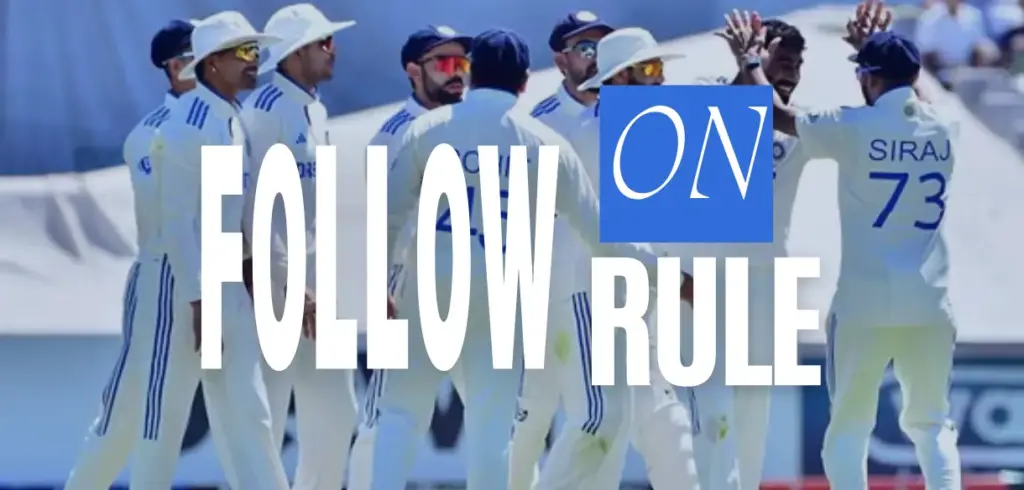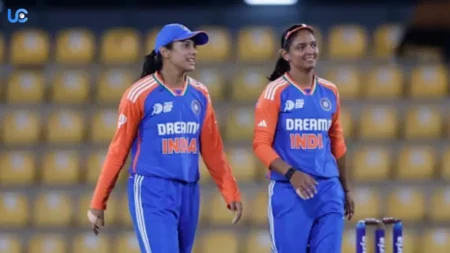The follow-on in Test cricket is one of the most common terms used in the longest format of the game. Be it international cricket or at domestic level, the follow-on rule is applied where a team has to bat twice in consecutive innings and to get a result, you need at least three complete innings.
Cricket is a game which is being played on the basis of various rules. From toss to the end of the ball, a cricket match will see different types of rules in different formats. And in this article, we will learn in depth about the follow-on rule, which is generally used in the longest format of the game.
What is test match follow on rules?
The rule of follow-on is generally used in red-ball cricket. It is an optional rule where a team that batted in the second inning might be asked to bat again in the third inning on the basis of their score. This rule will be used in case the lead or difference in runs between the two teams during their first inning is more than a predefined margin.
Hence, if the team batting in the second inning scores fewer runs, they might be asked to bat once again after the competition of their first inning. This rule is generally enforced by the team that bats first in order to get the result of the match as early as possible or deny the possibility of a draw.
Read More:- Most Wickets in a Test Match
When is the Follow-on Rule applied in Test cricket?
As discussed, this rule is applied when the team in the better position goes for the result. As seen in Test cricket, struggling teams try to play and take the game deep to the end of scheduled time (or complete five days) to avoid a defeat. That’s where the team that batted first can enforce the follow-on.
The captain of the team that batted first has the decision to enforce the follow-on. A captain can take note of a number of things, like weather, the team’s situation, and his team’s strength, in order to enforce a follow-on on the opposition. This Law 14 in the Law of Cricket explains about this rule.
The Law 14 states, “A captain shall notify the opposing captain and the umpires of his/her intention to take up this option. Once notified, the decision cannot be changed.”
| Normal Test | Test with Follow-on |
| First Innings (Team A) | First Innings (Team A) |
| Second Innings (Team B) | Second Innings (Team B) |
| Third Innings (Team A) | Third Innings (Team B) |
| Fourth Innings (Team B) | Fourt Innings (Team A) if required |
See Also:- IPL 2025 Auction
What are the minimum criteria for runs to enforce a follow-on?
According to Law 14, the difference of runs between two teams to apply the follow-on rule depends on the length of the cricket match. If it is a test match or a five-day match, then the difference between runs or lead should be a minimum of 200 runs. Meanwhile, when it is at domestic level or a four-day match, then the lead or difference of runs should be at least 150.
However, if it is a two-day match or the match gets reduced to two days because of weather, then the margin should be 100 runs, whereas if the game gets reduced to one day, then the difference should be 75 days. According to Law 14.1.3, if the first day of a test gets washed out and the first ball of the match will be bowled on the second day, then the lead or margin should be calculated as a four-day game.
The rule states, “If no play takes place on the first day of a match of more than one day’s duration, 14.1 shall apply in accordance with the number of days remaining from the start of play. The day on which play first commences shall count as a whole day for this purpose, irrespective of the time at which play starts.”
You Can Check Also:- What is the Meaning of Uncapped Player in IPL & Rule
Why is the follow-on enforced in Test Cricket?
The decision is made by the captain of the leading team to get the result of the game. As modern-day Test cricket has become more result-oriented, captains are keen to enforce a follow-on if there is an option. Though it has some cons as well but the percentage of win is very high in such cases.
But it can be tiring for the bowlers as they have to bowl consecutively for two innings, and there are chances that the team that enforces a follow-on has to bat on the final-day pitch, which is worn, torn, and deteriorating. However, the chances of winning increase as the team that is batting again is already under pressure and already has a big lead to overcome and score a significant challenge for the opposition to let them bat again.
Read More:- What is RTM in IPL 2025 Auction
Teams to lose Test matches after enforcing a follow-on
In the 150+ history of Test cricket, there have been multiple occasions when a team has won after enforcing a follow-on. But in history, there have been only four such occasions when a team has lost from a dominating position of enforcing a follow-on. Below, you can see those four matches.
- Australia (586 & 166) lost by 10 runs against England (325 & 437) at Sydney Cricket Ground on December 14, 1894. (First Innings lead: 261)
- Australia (9/401d & 111) lost by 18 runs to England (174 & 356) at Headingley on July 16, 1981 (First Innings lead: 227)
- Australia (445 & 212) lost by 171 runs to India (171 & 7/657 dec) at Eden Gardens on March 11, 2001 (First Innings lead: 274)
- England (435/8 dec & 256) lost by 1 run to New Zealand (209 & 483) at Basin Reserve on February 28, 2023 (First Innings lead: 226)




